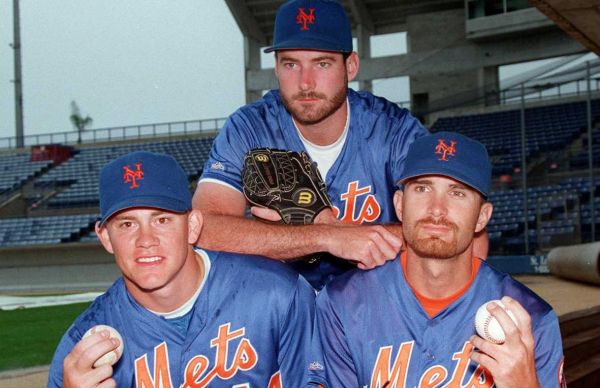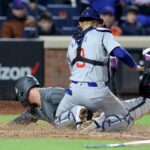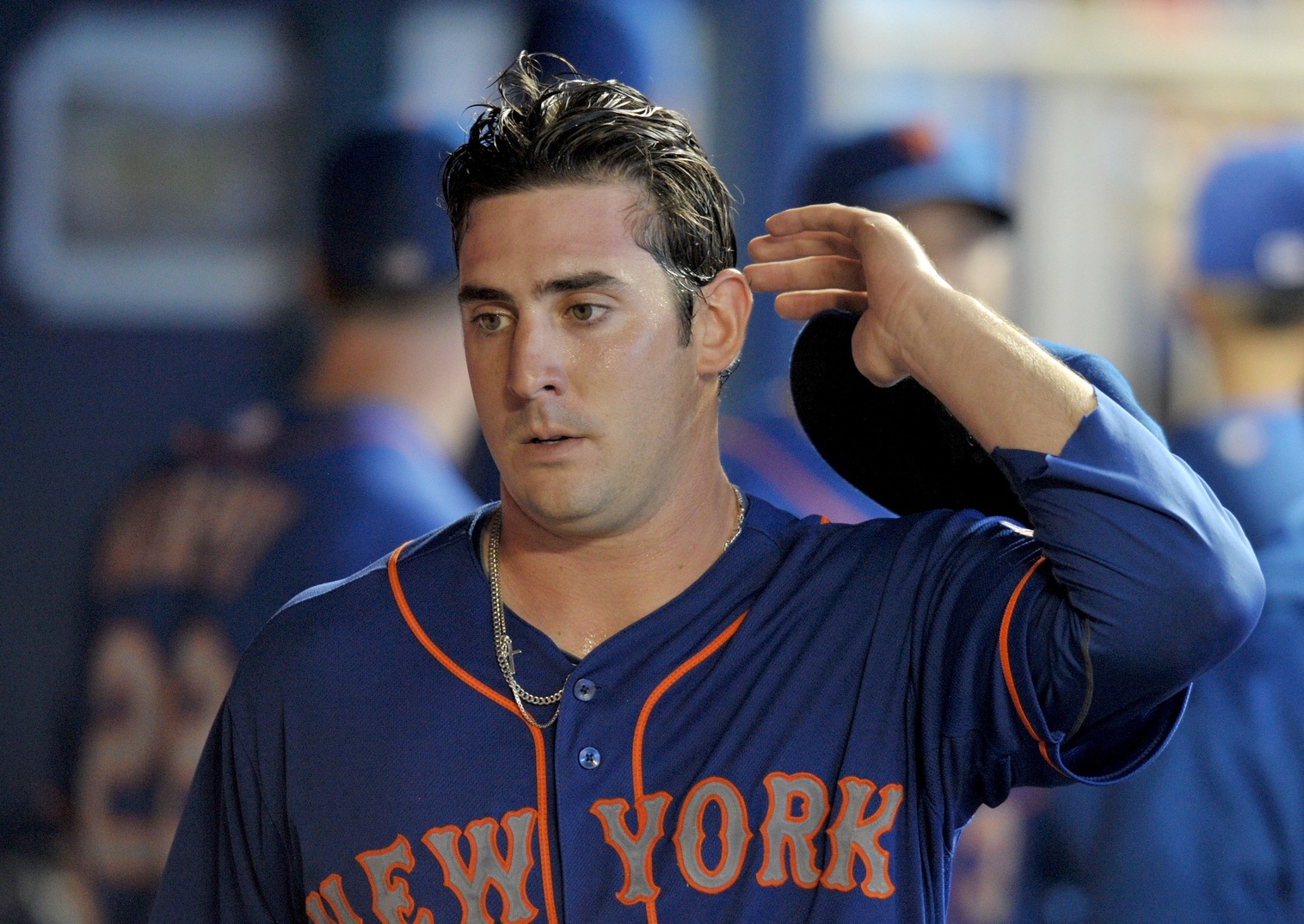
I can’t even count how many times broadcasters, commentators or play-by-play announcers have started a sentence with: “The Mets, an organization known for pitching…” Really??? Perhaps it’s time to rethink exactly how knowledgeable the Mets are when it comes to pitching.
In one of the first scenes in the classic Field of Dreams, Ray Kinsella is driving a tractor, his daughter Karin at his side. As he regales her with stories of Shoeless Joe Jackson, he says, “His glove was where triples went to die.” With the latest injury to yet another of our aces, I’m starting to wonder if perhaps Flushing is where careers go to die.
“Matt Harvey joins a long list of Mets greats like Seaver, Koosman, Matlack and Gooden.”
We’ve heard these remarks and ones similar to them repeatedly during the first 5+ months of 2013. But think about that. Seaver last pitched for the Mets 30 years ago, Koosman not since 1978, Matlack’s last start was September 30, 1977. And for all intents and purposes, Doc’s career flamed out after just 3 seasons.
You can choose almost any team in baseball and if you’re willing to go back thirty five years you are sure to find numerous great pitchers. The Cubs: Mark Prior, Kerry Wood, Greg Maddux, Rick Reuschel. The Dodgers: Andy Messersmith, Fernando Valenzuela, Clayton Kershaw. The Royals: Bret Saberhagen, Mark Gubicza, Dennis Leonard. Yet, the Mets have us convinced that somehow we have cornered the market on pitching greatness.
Upon closer examination, one can see failures have far outnumbered successes. This is not something recent either. Rather it’s a trend that began long before Terry Collins and Dan Warthen. As we wait for Matt Harvey to return, probably not until 2015, we really shouldn’t be surprised. He is just the latest in a long line of major miscalculations this organization has made.
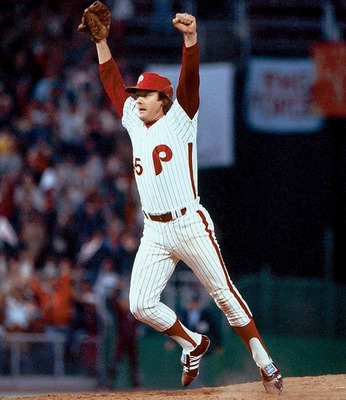 Way back on December 3, 1974, management traded one of the most beloved figures in team history. Tug McGraw struggled a bit that season and had some minor shoulder problems. Thinking they were being sneaky and shrewd by unloading damaged goods, the Mets discarded Tug to the Phillies.
Way back on December 3, 1974, management traded one of the most beloved figures in team history. Tug McGraw struggled a bit that season and had some minor shoulder problems. Thinking they were being sneaky and shrewd by unloading damaged goods, the Mets discarded Tug to the Phillies.
The Phillies quickly realized Tug’s sub-par season was simply due to a cyst, something the Mets missed. The cyst was removed and Tug would pitch for Philly for 9 years. Ya gotta believe the Phillies had the last laugh. As the Mets staked claim to the NLE cellar, the Phillies would make the post-season 5 times over 7 years. When the organization won their first World Series in 1980, it was Tug on the mound recording the final out.
With Seaver and Matlack gone and Koosman itching to go, Craig Swan became the de-facto ace of the Mets staff. In 1978, his 2.43 ERA was lowest in the league. He posted good numbers in 79 as well. In 1980, however, he missed half the season with a torn rotator cuff. In 1981, Swan was put on the DL three different times with various injuries. He rebounded in 82 but in spring training of 83, he felt something pop in his elbow. His career was finished.
The dark days of Grant’s Tomb would surely end with the emergence of Tim Leary. Leary, the first pick for the Mets in 1979, was the newest addition to ‘The Next Tom Seaver’ club. On April 12, 1981, Leary took the mound on a cold, damp day at Wrigley Field. After striking out 3 of the first 6 batters he faced in the majors, Leary blew out his arm and was pulled from the game. He was never the same. He missed the remainder of the 81 campaign, was reinjured in spring training 1982 and missed that entire season as well. He returned in 83, a shell of the promise he once possessed. After pitching just 64 innings over 2 seasons, he was traded to Kansas City. He found moderate success in KC and Milwaukee. In 1988, he was a member of the Dodgers. After the Dodgers upset the Mets in the playoffs and Oakland in the Series, Tim Leary added ‘NL Comeback Player of the Year’ award to his World Series ring.
There’d never been a pitcher in NY that captured the hearts of fans the way Dwight Gooden did. Doc became larger than life. His impressive stats literally were mind-boggling. Long standing records fell as Doc piled up wins, strikeouts and awards en route to Cooperstown. After his first 3 seasons, Doctor K was 58-19 with 744 strikeouts in 744 2/3 IP. He’d tossed 35 complete games in three years. His personal problems definitely cost him a shot at greatness he never achieved. But there were other issues as well, on-the-field issues. Pitching coach Mel Stottlemyre attempted to change Gooden’s delivery in an attempt to prolong his career, even though he never had been injured. In his Cy Young season of 1985, Doc tossed 276 2/3 innings. Since then, only one pitcher, Roger Clemens, has tossed more in a single season. Experts have estimated that Doc threw 10,000 pitches before turning 21.
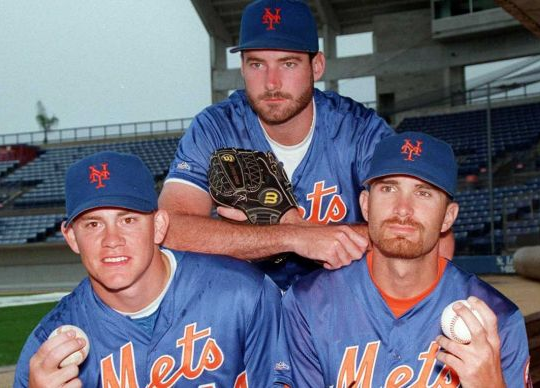 Fast forward to the mid 90’s. Licking our wounds from the dynasty that never materialized in the 80’s, we were optimistic about the future. This time there was no ‘next Tom Seaver.’ Instead, there was the next Seaver, Koosman and Matlack. Ah, yes, Generation K was on the way. It quickly became apparent, however, that Generation K was not a trio of superstars but rather an exclamation point on Mets pitching futility.
Fast forward to the mid 90’s. Licking our wounds from the dynasty that never materialized in the 80’s, we were optimistic about the future. This time there was no ‘next Tom Seaver.’ Instead, there was the next Seaver, Koosman and Matlack. Ah, yes, Generation K was on the way. It quickly became apparent, however, that Generation K was not a trio of superstars but rather an exclamation point on Mets pitching futility.
Bill Pulsipher was a 2nd round pick in 1991. Called up in 95, the rookie tossed a hefty total of 218 innings between the majors and the minors. He then proceeded to miss all of 1996 and most of 1997 with elbow injuries. He returned…kinda. From 98-00, he tossed a total of 21 innings while amassing a 4.63 ERA.
The ‘Koosman’ of Generation K was Jason Isringhausen. He debuted in July 95 and did well, going 9-2 with a 2.81 ERA. The following year, however, the string of endless almost uncanny injuries began. He was sidelined with a pulled rib cage muscle, bone spurs and a torn labrum. Through 6 starts in his following year, 1997, his ERA was an embarrassing 7.58. He then suffered a broken wrist and while coming back from that came down with tuberculosis. He missed all of 1998 due to reconstructive elbow surgery. After coming back from that, the Mets traded him to Oakland. Put into the closer role, he posted a stellar 2.13 ERA. Two years later, as the closer for St. Louis, he would lead the league in saves with 47.
The third member of this infamous trio was Paul Wilson. Wilson was the most heralded with the greatest upside. In spite of experts questioning his mechanics and unorthodox delivery, the Mets made him the #1 pick overall in 1994. He joined the club in 1996 and after going 5-12 with a 5.38 ERA, he was put on the DL with tendinitis. Shoulder surgery prevented him from pitching at all in 97. Wilson ended up in Tampa Bay and Cincinnati before giving up on baseball and retiring with a record of 40-58 and a 4.86 career ERA.
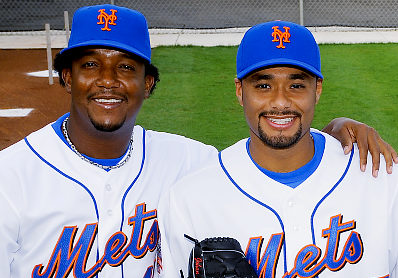 It was a new century but the same old pitching woes. Pedro Martinez had been the top pitcher in the AL for nearly a decade. When the Mets signed the 33 year-old righty, we knew that his best days were most likely behind him. But even an aging Pedro is better than most guys in their prime. His first year, 2005, his 15 wins and 2.82 ERA was tops on the team. The following year, however, he missed one third of the season with 2 separate injuries. He was also unavailable for the post-season. After tossing 28 innings in 2007, Pedro underwent surgery on his rotator cuff. In 08, after coming back, he was sidelined for 2 months with a hamstring injury. Over his last 2 years with the Mets, he threw only 138 innings.
It was a new century but the same old pitching woes. Pedro Martinez had been the top pitcher in the AL for nearly a decade. When the Mets signed the 33 year-old righty, we knew that his best days were most likely behind him. But even an aging Pedro is better than most guys in their prime. His first year, 2005, his 15 wins and 2.82 ERA was tops on the team. The following year, however, he missed one third of the season with 2 separate injuries. He was also unavailable for the post-season. After tossing 28 innings in 2007, Pedro underwent surgery on his rotator cuff. In 08, after coming back, he was sidelined for 2 months with a hamstring injury. Over his last 2 years with the Mets, he threw only 138 innings.
If Pedro was the most dominant RHP in the AL, Johan Santana was the most dominant LHP in the league. The Mets forked over $137 million for 6 years. In 08, his first season in New York, the perennial All-Star pitched well, going 16-7 with a 2.53 ERA. His 206 K’s set the team record by a lefty. Late in the year, a torn meniscus put him on the DL. In 09, Johan was pitching well again. 13-9 with a 3.13 ERA. Then came another trip to the DL, this one thanks to bone chips. In September 2010, with an 11-9 record and ERA just below 3.00, Santana underwent surgery to repair a torn anterior capsule in his left shoulder. Three straight seasons cut short with injuries. After missing all of 2011, Johan returned in 2012. Although he tossed the first no-no in team history, he struggled all year. At 6-9 with a 4.85 ERA, Johan was put on the DL twice in the second half. In spring training of 2013, he re-tore his surgically repaired shoulder. With roughly one third of the Mets salary tied up in Santana this season, his career may very well be over.
In the spring we lost our ace. Yesterday, we lost another ace.
As much as we’d like to blame someone, we really can’t. Terry Collins and Dan Warthen have been closely monitoring Harvey’s pitch count and IP. Only twice this year did Harvey surpass 120 pitches (121) and his workload from 2012 to 2013 has only increased 9 innings, from 169 to 178. Perhaps it’s merely bad luck but Harvey is just the latest in a long history of Mets pitching tragedies.
We all hope that Matt will recover—and recover quickly. Tommy John surgery is most likely in his future and if so, he’ll be gone until 2015. Let’s hope when he comes back he continues his quest to finally, at long last, be the next Tom Seaver. And not the next Tim Leary.
In the meantime, Harvey will join on the disabled list pitcher Jeremy Hefner, pitcher Bobby Parnell, pitcher Jenrry Mejia, pitcher Johan Santana, pitcher Jeurys Familia and pitcher Frank Francisco. Looks like Generation K has been replaced with Generation DL.
With all these injured arms and the Mets track record of handling pitching, I can’t help but wonder if Zack Wheeler will be calling his agent anytime soon, pleading, “Get me the hell out of here.”

